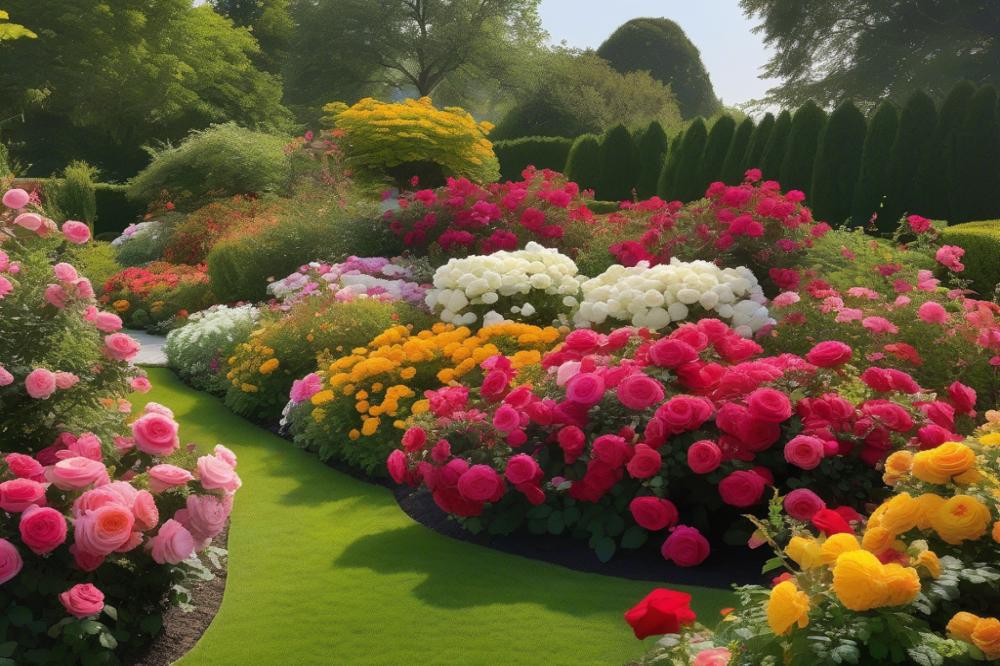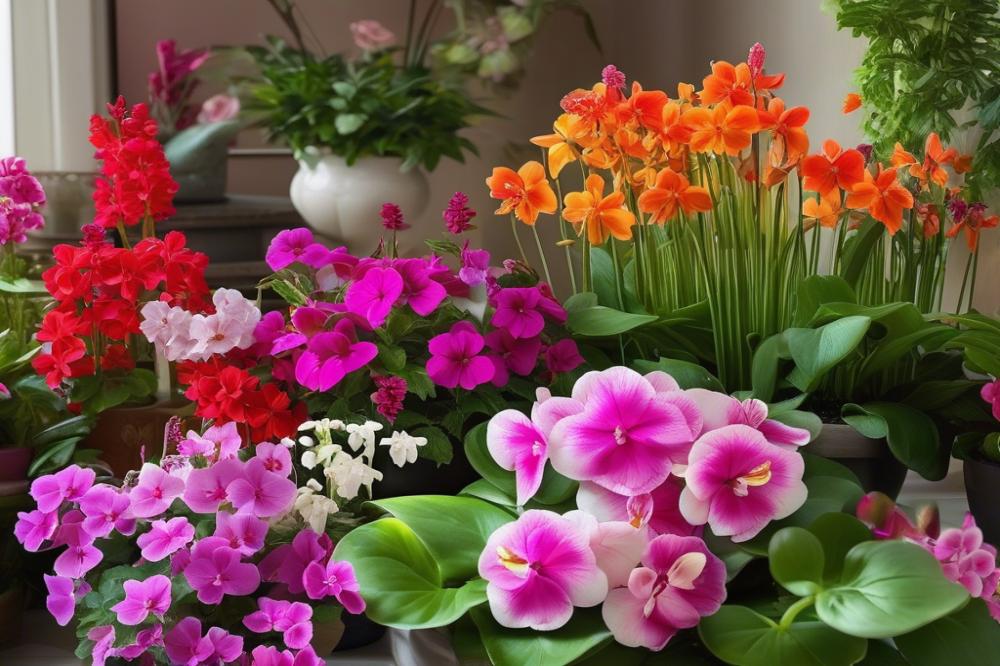The Best roses“>companion flowers to Plant with roses
growing roses can be a rewarding experience. However, many gardeners overlook the advantages of planting certain flowers alongside them. Companion planting plays a significant role in enhancing the growth and health of roses. This gardening practice involves selecting specific plants that benefit each other when grown in proximity. When roses share their space with favorable flowers, the results can be astounding.
Utilizing flowers like marigolds can repel pests that often threaten roses. Similarly, lavender can attract beneficial insects that help pollinate and control harmful bugs. Including plants such as salvia and catmint creates a vibrant ecosystem, while also adding variety to your garden’s look. Each flower contributes its own essence, combining to form a harmonious blend with the boldness of roses.
Moreover, the visual appeal of using companion flowers cannot be understated. Peonies and daisies bring in stunning colors that create a picturesque setting. Incorporating zinnias and geraniums adds layers of texture and movement. Together, they transform any rose garden into a captivating display.
In essence, selecting the right companion flowers can elevate both the beauty and health of roses. It’s an easy way to create a thriving environment that showcases the best of nature. So, consider how these companions can work wonderfully alongside your roses, making your gardening efforts truly worthwhile.
Understanding Companion Flowers

Companion flowers serve a vital purpose in gardening. They are chosen to grow alongside other plants for various benefits. These blooms can enhance the overall health of your garden, especially when planted near roses. Their roles often extend beyond mere aesthetics.
One significant advantage of planting certain flowers with roses is pest control. For example, marigolds are well-known for repelling unwanted insects. Their aroma can deter aphids, making your rose bushes stronger and healthier. lavender also plays a role by attracting pollinators while keeping pests at bay. Pollinators like bees are essential for a flourishing garden.
In addition to managing pests, companion flowers can contribute to improved soil health. Planting salvia and catmint can enrich the nutrient content of the soil around your roses. These plants often fix nitrogen in the ground, which helps roses thrive. When flowers like peonies and daisies are used, they can also contribute to a vibrant ecosystem, promoting beneficial organisms in the soil.
Enhancing the beauty of your garden is another benefit. Zinnias and alyssum provide a splash of color that complements the elegance of roses. Geraniums add a unique texture that makes the garden visually appealing. Foxgloves can introduce vertical interest, drawing the eye and creating a more dynamic space.
Creating a balanced environment is essential for any garden. Diversity among plants fosters resilience against diseases and pests. When you combine roses with various companion flowers, you build a thriving ecosystem. Each bloom plays a part, contributing to the success of the surrounding plants.
Top Companion Flowers for Roses

Roses are not only beautiful but also benefit from being planted alongside certain flowers. Pairing them with the right companions can enhance their health and appearance. Consider marigolds first. These vibrant flowers are known for their ability to repel pests that can damage rose bushes.
Next, think about lavender. Not only does it produce a delightful fragrance, but it also attracts pollinators like bees and butterflies. The combination of roses and lavender can create a stunning visual and aromatic experience in your garden.
Salvia is another excellent option. This flower draws in beneficial insects that help keep harmful pests away from your roses. With its striking blooms, salvia adds beauty while promoting a healthy ecosystem.
Foxgloves stand tall and provide a unique height contrast in a rose garden. Their elegant spikes add visual interest, making your garden more appealing. Additionally, these flowers bloom at a different time, enriching the display throughout the growing season.
Consider catmint as well. This plant is known for its ability to calm pests, reducing their numbers around your roses. Its soft, aromatic foliage invites pollinators, making it a win-win choice for your garden.
If you want a touch of classic beauty, peonies are ideal. Their bloom times complement those of roses, and they create a harmonious look. Both plants share vibrant colors and lush textures, enhancing the overall aesthetic.
Daisies are simple yet stunning companions. They attract bees with their bright and cheerful appearance. Planting them near roses not only adds charm but also supports pollination efforts.
Alyssum deserves a spot in any rose garden. This low-growing flower works as an effective ground cover. It provides a great nectar source for insects while helping to keep the soil moisture balanced.
Geraniums come with numerous benefits as well. These flowers excel at suppressing weeds, allowing your roses to thrive. Their colorful blooms provide a vibrant backdrop for your prized roses.
Lastly, zinnias are perfect for adding a burst of color. Their diverse range of hues attracts butterflies, which can be delightful to watch. These bountiful blooms can create a lively atmosphere in your garden while benefiting your roses.
Planting Tips for Companion Flowers

Growing flowers alongside roses can enhance beauty and health in the garden. Start by thinking about spacing. Aim for about 12 to 18 inches between each plant. This distance allows airflow and minimizes competition for nutrients.
Light conditions play a significant role too. Most flowers like marigolds and lavender thrive in full sun. Placing these near your roses will help them both flourish. To create a balanced look, consider using taller plants like foxgloves behind shorter ones such as zinnias and daisies. This layering effect adds depth to your garden.
Soil quality matters just as much as sunlight. A well-draining mix will support both roses and their flowering friends. Adding organic matter improves drainage and provides essential nutrients. Catmint and geraniums can tolerate various soil types but perform best with a slightly acidic to neutral pH.
Watering is another crucial factor. Roses appreciate consistent moisture but do not like soggy roots. Position alyssum around them to help retain humidity without waterlogging the soil. Additionally, be mindful of the local climate when planning placements. Cold-tolerant varieties like peonies contrast nicely with the warm blooms of salvia.
Always consider each plant’s growth habits. Some varieties may spread more than others. Zinnias can grow quite large, potentially overshadowing smaller flowers. Divide your beds thoughtfully, so every plant gets its share of sunlight and space. Regularly check for overcrowding or signs of disease, ensuring your garden remains healthy and vibrant.
Keep an eye out for pests as well. Marigolds are known to deter harmful insects; utilize them strategically. By carefully planning, you create a lively, harmonious garden where roses and their companions thrive together.
Caring for Roses and Companion Flowers

Taking care of your roses and their friends is important for a vibrant garden. Start with watering. Roses love moisture but not soggy roots. Water them deeply once or twice a week, depending on the weather. Marigolds, for example, also need regular watering. Keep the soil moist but not drenched for these colorful blooms as well.
Next, let’s talk about fertilizing. Roses thrive on a balanced fertilizer. A slow-release option works well in spring. Apply it according to package instructions for the best results. Companion plants like lavender and catmint are a bit different. They prefer less fertilizer, so feed them sparingly, using a light compost mixture to avoid overdoing it.
Pruning is another key step in caring for roses. Deadheading spent blooms helps plants to focus energy on new growth. After the last frost, prune back about one-third of the plant. For zinnias and daisies, deadheading encourages continuous blooming. This simple act keeps your garden fresh and lively.
Always keep an eye on pests. Watch for aphids or spider mites. Introducing beneficial insects like ladybugs can help control these issues. Roses can suffer from diseases too; however, good air circulation and spacing between plants can help prevent many problems. Foxgloves and geraniums pair well while bringing extra beauty to your garden. They can minimize disease risk by promoting airflow.
Don’t forget about mulching! A layer of mulch retains moisture and helps keep weeds down. Organic mulch can also enrich the soil as it breaks down over time. Be cautious, though. Avoid piling mulch directly against the stems of your roses, as this may invite rot. Alyssum and peonies benefit from mulch in the same way, maintaining a healthy environment for growth.
Lastly, time your care methods correctly. Early morning is the best time to water. Doing so reduces evaporation and helps plants absorb moisture effectively. Plan to check on your garden in the afternoon as well. This way, you can observe how your marigolds and lavender respond to the day’s heat. Adjust your care based on what you see!
Common Pests and Diseases
Roses are beloved for their beauty, but they are also prone to various pests and diseases. Recognizing the enemies of your rose plants is crucial for keeping them healthy. Aphids, for instance, are tiny pests that can damage leaves and stems. They suck the sap from roses, leading to stunted growth. Ladybugs enjoy feasting on aphids, so attracting them is helpful.
Black spot is another common disease that affects rose bushes. It creates round, dark spots on foliage, causing leaves to yellow and drop. Adding lavender near your roses is a smart tactic. This aromatic plant helps repel some of the fungi that cause black spot while lending a pleasant fragrance to your garden.
Fungal diseases often thrive in humid conditions. Ensuring good air circulation around your roses helps reduce these risks. Planting flowers like salvia or peonies nearby can aid in this. Their upright growth and sprawling habits can improve airflow around your roses.
Spider mites pose a significant threat, especially during hot, dry weather. These pests are hard to spot until they’ve spread considerably. Incorporating catmint in your garden can help. Its strong scent deters spider mites along with other harmful insects.
Powdery mildew is another issue to watch for. It appears as a white, powdery coating on leaves. Marigolds offer visual charm and do double duty by repelling pests that contribute to this fungal issue. Keeping marigolds close to your roses adds a protective layer.
You can also use geraniums to bolster your rose garden. These flowers can deter Japanese beetles that love to munch on rose foliage. Choose varieties that bloom abundantly, as their color will enhance the visual appeal of your rose bed.
Insects like thrips can cause distortion in blooms and leaves. zinnias are fantastic allies in your fight against these pests. Their vibrant colors not only attract beneficial pollinators but also serve as a natural bug barrier.
Creating a diverse flower bed around your roses can have lasting benefits. Consider planting daisies and alyssum intermingled with your roses. Daisies attract pollinators while alyssum acts as a ground cover, reducing weeds. This harmony encourages a thriving garden ecosystem.
Regular monitoring is key to rose health. Check for signs of pests or disease weekly. When you catch problems early, you can treat them before they grow out of control. Use organic remedies whenever possible to protect beneficial insects. Taking proactive steps keeps your roses blooming beautifully.
Bringing It All Together
Roses are beautiful on their own, but they can thrive even more when paired with the right flowers. Using companion plants can create a balanced ecosystem in your garden. Certain blooms, like marigolds, help to repel pests while adding vibrant color. Others, such as lavender, attract beneficial pollinators that can enhance the health of your roses.
Combining different types of flora leads to numerous benefits. These plants can improve soil quality, promote healthy growth, and result in a more attractive garden overall. Plus, creating a visually appealing garden can boost your mood and make outdoor spaces more enjoyable.
Experiment with various combinations to see what works best for your specific environment. Each garden is unique, and what thrives in one space might not work in another. Don’t hesitate to try new pairings and learn from your experiences.
In summary, planting roses alongside complementary blooms can significantly benefit your garden. Discovering diverse combinations opens up endless possibilities for a flourishing landscape. So, get out there, explore different arrangements, and enjoy the beauty that comes from well-planned partnerships in your garden.



